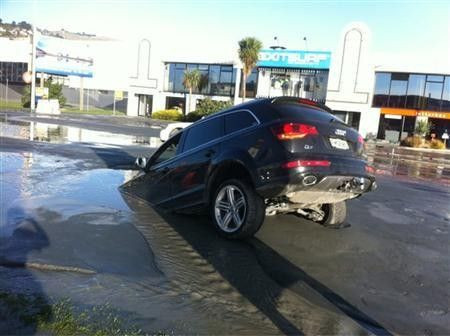New Evidence Shows 'Megathrust' Earthquake in New Zealand A Possibility

A new research has made New Zealand’s fears of a mega earthquake turn into a possibility. The first geological evidence of a massive quake possibly crossing fault boundaries have surfaced.
Previous modelling research has found that an 8.9 magnitude quake would leave more than 3,000 people dead and cause $13 billion worth of damages in New Zealand’s capital city of Wellington alone. The devastating quake that hit New Zealand in 2010 had a magnitude 6.3, which killed 185 people. The repair and rehabilitation of the damage in Christchurch alone had reached $40 billion.
Scientists have found that the Pacific plate is colliding and going under the Australian Plate in the Hikurangi Margin. The worst-case scenario model shows all three rupture together, reports New Scientist. “It seems like each new big subduction interface earthquake that we’ve had is coming out with surprises, showing that we really don’t know how they behave,” said Kate Clark from GNS Science research consultancy in New Zealand.
A megathrust earthquake could occur in a subduction zone or an area where two tectonic plates collide with one sliding beneath the other. Stuff reports that the possible affected area would stretch as far as Hawke’s Bay to Marlborough, or central New Zealand. The region could see quakes similar to the earthquake that struck Japan in May 2011 and cause a massive tsunami.
Clark and her colleagues went to salt marshes in New Zealand and studied the sediments using radiocarbon dating to determine risk factor. The researchers discovered that the area had experience two “megathrust” earthquakes in the past 1,000 years beneath Cook Strait. The first earthquake happened between 800 to 800 years ago while the second happened between 520 to 470 years.
According to the Bulletin of the Seismological Society of America, the evidence had surprised scientists. “This is the first evidence that the southern Hikurangi margin ruptures in large to great earthquakes, and the relatively short time interval between the two events has significant implications for seismic hazard in New Zealand,” said the researchers.
Clark believes that if the earthquake 500 years ago had ruptured across one segment boundary, there was no reason it could not rupture across another one. She said people in coastal zones would need to move inland quickly if they start to feel a strong earthquake.
(To report problems or leave feedback on this article, contact: r.su@ibtimes.com.au)




















